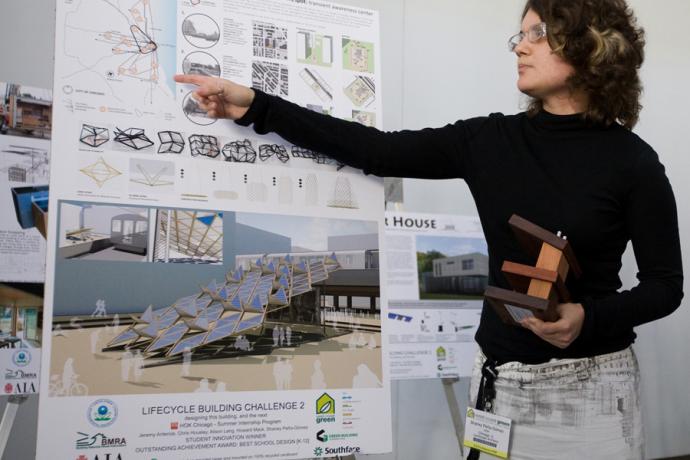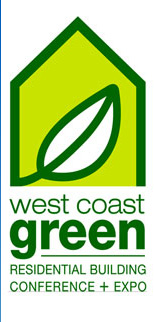Lifecycle Building Challenge Returns to West Coast Green
U.S. EPA, partners kick off competition to reward designs that save resources, costs at West Coast Green
Published 08-27-09
Submitted by West Coast Green
 A Lifecycle Building Challenge 2008 award winner presents at West Coast Green 2008.
A Lifecycle Building Challenge 2008 award winner presents at West Coast Green 2008.The U.S. Environmental Protection Agency, West Coast Green and partners are inviting the nation's students, architects, product developers, educators, and environmental leaders to participate in the third annual Lifecycle Building Challenge by submitting innovative designs that minimize waste, reuse materials, and cut greenhouse gas emissions.
The challenge, open to built and un-built projects, has two main categories:
Building - an entire building from foundation to roof
Product - building products or materials
Competition winners will receive complementary VIP Passes to West Coast Green, the nation's largest conference on green innovation, and share their designs at a lifecycle building forum during the conference. Outstanding entries in each category will be recognized and publicized in national journals and other conferences nationwide. Two other exceptional entries will be recognized with Outstanding Achievement Awards: Best Greenhouse Gas Reduction Design and Best School Design.
The Lifecycle Building Challenge was created in 2006 with the help of West Coast Green's "Action Hub", an interactive space where ideas are turned into practical projects, products and businesses. Since then the challenge has propelled to an international level. West Coast Green 2009 will be held Oct. 1-3 at Fort Mason Center in San Francisco.
Visit www.westcoastgreen.com for registration or for more information.
Ideas generated by the contest help advance the building industry toward diverting the more than 100 million tons of building-related construction and demolition debris sent to landfills in the United States annually. This free, Web-based competition supports an on-line library of competition entries and green building resources. Deadline for 2009 submission is August 30.
Lifecycle building maximizes material recovery to reverse the trend of disposing large quantities of construction and demolition debris in landfills. Building renovation and demolition accounts for 91 percent of the construction and demolition debris generated each year, while new construction accounts for only 9 percent. Between 2000 to 2030, it is expected that 27 percent of existing buildings will be replaced and 50 percent of the total building stock will be constructed. By creating building components that can be easily recovered, materials are kept at their highest value, resulting in reduced energy and resource consumption.
For more information or to enter the competition, visit http://www.lifecyclebuilding.org.
The Lifecycle Building Challenge is an international competition to design buildings for future disassembly, adaptability, and material reuse. The Challenge aims to reuse the more than 170 million tons of construction material generated each year. Winning designs preserve the embodied energy of building materials by creating buildings that can be easily taken apart for reuse. Students and professionals will receive international recognition for outstanding ideas in building and product categories. Register and submit your entry by August 30, 2009 on the website. www.lifecyclebuilding.org
West Coast Green is an annual conference launched out of a need for a common conversation for decision makers influencing the greening of the built environment. Today, four years since its inception, West Coast Green continues to provide dynamic, big-picture, systems-thinking education, strategy, connections and professional development to these leaders. http://www.westcoastgreen.com

West Coast Green
West Coast Green
West Coast Green is the largest conference on green innovation for the built environment. On October 1st-3rd at the Fort Mason Center in San Francisco 14,000 thought leaders and forward thinkers will convene to engage in dynamic, big-picture, systems-thinking to reinvent business, laugh, make connections, affect policy, and create meaningful and lasting positive change.
More from West Coast Green

